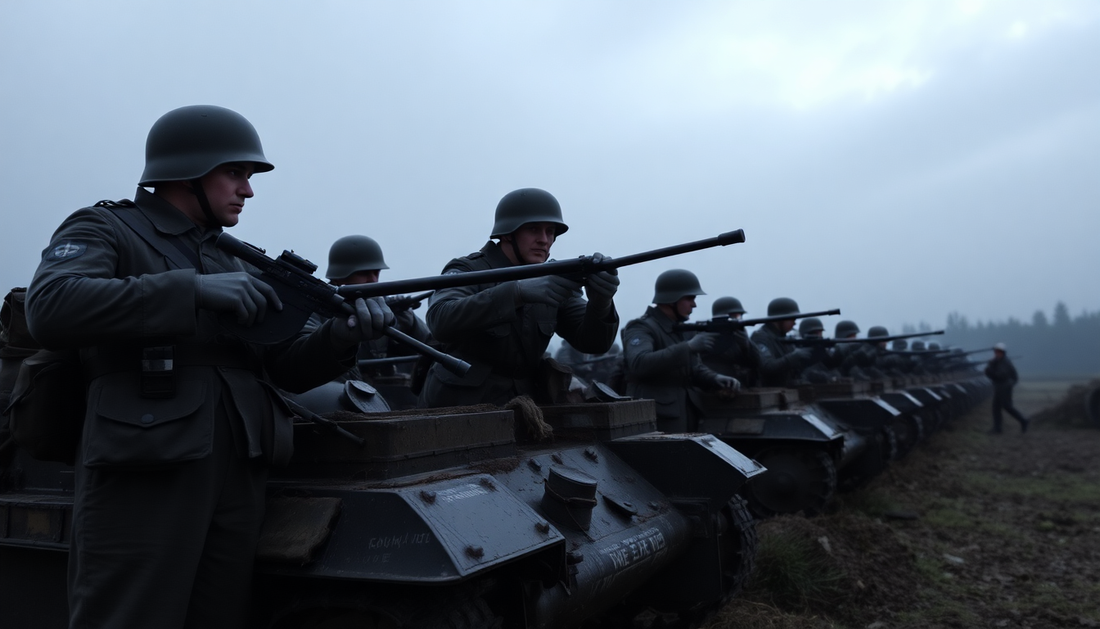
The Role of Historical Accuracy in Military Reenactment Uniforms
Share
Military reenactments offer a unique way to experience history, and one of the most critical elements of this immersive experience is the uniform. Historical accuracy plays a central role in ensuring that these recreations are not only visually authentic but also educationally valuable. From fabric selection to insignia placement, every detail contributes to a deeper understanding of the past. Whether you're a seasoned reenactor or just starting out, understanding the significance of accurate uniforms can elevate your experience and help preserve history for future generations.
Why Historical Accuracy Matters in Military Reenactment Uniforms
Connecting with the Past
Historical accuracy in military reenactment uniforms allows participants and spectators to connect more deeply with history. Wearing a uniform that closely resembles what a soldier would have worn in a specific time period creates a tangible link to the past. This connection fosters a sense of respect and understanding for the individuals who lived through those events. The attention to detail in uniforms, from stitching to insignia, helps recreate the lived experience of soldiers, making history more relatable and real.
Preserving Historical Integrity
Accuracy in reenactment uniforms is essential for preserving historical integrity. When uniforms are recreated with precision, they reflect the technological, cultural, and strategic realities of the time. This authenticity helps educators and historians present a more accurate portrayal of military history. It also ensures that younger generations receive a correct and respectful representation of historical events. Inaccurate or loosely based uniforms can distort the narrative and diminish the educational value of reenactments.
The Impact of Authentic Uniforms on Educational Value
Enhancing Learning Through Immersion
One of the key benefits of using historically accurate uniforms is the enhancement of the educational experience. When participants wear uniforms that reflect actual military attire from a specific era, it creates a more immersive environment. This immersion helps both reenactors and observers better understand the conditions soldiers faced. For example, wearing wool uniforms in the summer heat can help reenactors appreciate the physical challenges soldiers endured. These experiences provide a more visceral understanding of history than books or lectures alone can offer.
Engaging the Public with Visual Accuracy
Accurate uniforms also play a crucial role in engaging the public. When spectators see reenactors dressed in authentic attire, it reinforces the credibility of the event. This visual accuracy can spark curiosity and encourage deeper exploration of historical topics. Museums, schools, and historical societies often use reenactments as educational tools, and having accurate uniforms increases the effectiveness of these programs. It allows educators to create a more compelling and trustworthy narrative that resonates with diverse audiences.
Key Elements of Historically Accurate Uniforms
Fabric and Material Selection
One of the most important aspects of historical accuracy in uniforms is the choice of fabric and materials. Military uniforms from different periods were made using specific textiles that reflected the available technology and resources of the time. For instance, World War II German uniforms were often made from wool or wool blends that were durable and practical for combat conditions. Modern reenactors must replicate these materials to maintain authenticity. Using incorrect fabrics, such as synthetic materials that did not exist at the time, can detract from the overall historical accuracy of the uniform.
Insignia, Patches, and Accoutrements
Another critical detail in reenactment uniforms is the accurate reproduction of insignia, patches, and other accoutrements. These elements often denote rank, unit, and specific roles within the military structure. For example, the WWII German ARMY Elite Panzer Uniform Reproduction includes specific markings that identify elite tank units. Failing to include these details or using incorrect insignia can misrepresent the soldier's role and diminish the educational value of the reenactment.
Challenges in Achieving Historical Accuracy
Availability of Original Materials
One of the primary challenges reenactors face is sourcing materials that were used in the original uniforms. Many fabrics and dyes used in historical military uniforms are no longer in production or are difficult to find. As a result, reenactors must often rely on reproductions or modern equivalents that closely match the original materials. This process requires extensive research and sometimes trial and error to ensure that the final product is both visually accurate and functional for reenactment use.
Balancing Cost and Authenticity
Achieving historical accuracy can also be costly. High-quality reproductions, especially those made with period-appropriate materials, can be expensive. Many reenactors must balance the desire for authenticity with budget constraints. Some opt for more affordable alternatives that still maintain a high level of accuracy, while others invest in premium reproductions for special events or displays. Despite these challenges, many reenactors prioritize accuracy because of its importance in preserving history and enhancing the overall experience.
How to Begin Building an Accurate Reenactment Wardrobe
Research and Planning
Before purchasing or sewing a uniform, it's essential to conduct thorough research on the specific time period and military unit being represented. This includes studying photographs, historical documents, and existing museum pieces. Many reenactment groups and online forums also provide valuable resources for understanding the details of uniforms from different eras. Planning out each component of the uniform ensures that every piece contributes to the overall historical accuracy of the portrayal.
Choosing Quality Reproductions
Once the research is complete, the next step is to source high-quality reproductions. Look for reputable vendors who specialize in historically accurate military apparel and accessories. Pay attention to details such as stitching, fabric weight, and color accuracy. Investing in well-made reproductions not only enhances the authenticity of the uniform but also ensures durability during reenactment events.
Conclusion: The Lasting Value of Historical Accuracy
In conclusion, historical accuracy in military reenactment uniforms is more than just attention to detail—it is a commitment to preserving history and honoring those who served. Accurate uniforms enhance the educational value of reenactments, engage the public, and create a deeper connection to the past. While achieving this level of authenticity can be challenging, the rewards are well worth the effort. Whether you're participating in a battle reenactment or giving a historical demonstration, wearing a historically accurate uniform ensures that your portrayal is both respectful and informative. As the reenactment community continues to grow, maintaining high standards of accuracy will help keep history alive for generations to come.
Frequently Asked Questions (FAQ)
What does historical accuracy mean in military reenactments?
Historical accuracy refers to how closely a reenactment uniform or portrayal matches the actual uniforms and behaviors of soldiers from a specific time period. It involves using correct materials, designs, and accessories to ensure that the portrayal is as authentic as possible.
Why is fabric choice important in reenactment uniforms?
Fabric choice is important because it affects both the appearance and functionality of the uniform. Historical uniforms were made with specific materials available at the time, and using modern substitutes can change the look and feel of the garment. Accurate fabric selection helps maintain the integrity of the portrayal.
Where can I find historically accurate military reenactment uniforms?
You can find historically accurate uniforms from specialized vendors who focus on military reproductions. Be sure to research the specific time period and unit you're representing to ensure that the uniform meets the standards of authenticity expected in reenactment circles.
